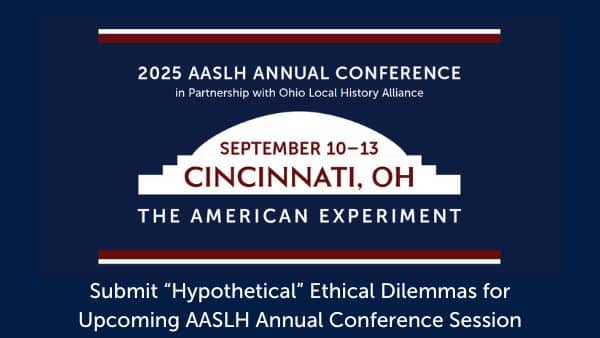One of the best sessions at a museum conference that I ever attended was at the 2010 AASLH Annual Meeting. The presenters were Erik Holland, James Hakala, and Mary Kay Cunningham, and the topic was Museum Education 101: Program Development and Presentation. What struck me about this session was how important it is to get back to the basics of interpretation.
Working at a historic house museum where tours are docent-led and timed, we often get caught up in the history that we are trying to pass along and the amount of time we have in which to dispense all of our information. What gets overlooked is visitor engagement. How many docents actively think about whether or not their visitors are enjoying themselves? If you aren’t paying much attention to your visitor, then why should you expect them to pay attention to you? An engaged visitor is one that feels that they are included, that they are part of something unique. Creating an environment where people feel comfortable is vital to creating a positive visitor experience.
Here is a brief list of “back to basics” reminders for visitor engagement that we put together for our docents at the Homestead Museum:
- Know your visitor. Take a few moments before the tour begins to greet your visitors. A friendly, smiling face puts the visitor at ease and gives you the opportunity to find out where they are from and what brings them to your site, which is knowledge that you can use to your advantage while on tour. The more you can relate to a visitor personally, the more involved they will be in your tour.
- Watch their body language. If you notice that people are wandering off, looking around, or constantly shifting their weight while you are talking, they are not engaged with the tour. Reignite interest by changing the topic or delivery, or move to a different space.
- Share the wealth, ask questions. A successful museum tour shouldn’t be one-sided. You shouldn’t be the only one talking. Include your visitor. Avoid questions with “yes” and “no” answers, or ones that require a history degree. Instead, find places in your tour to ask visitors what they think about an object, situation, or idea. If you ask people for their opinion they will be more willing to get involved and less afraid of giving a wrong answer. You score bonus points if you can spark a conversation amongst the members of your tour by asking a question!
- Use the objects on exhibit. This may seem like a no-brainer, but sometimes we get so caught up in telling a story that an object can seem like an afterthought. People like history they can see and possibly relate to. Use objects to illustrate points within the story, and not just as something to see or touch before moving on to the next stop.
- Be inclusive. At the Homestead, we often have a great mix of visitors on the same tour including, seniors, families with young children, college students, etc. Sometimes the focus of a docent’s attention falls on select members of the group (usually those that look like they are paying the most attention or that the docent can relate to). Interpreters should be mindful of finding places within their tour where they can engage visitors of various ages, backgrounds, and interests.
This post comes from Gennie Truelock, Programs Coordinator at the Homestead Museum in the City of Industry, CA. In this dynamic position, she develops and implements engaging programs for audiences ranging from preschoolers to seniors. Gennie serves as team chair of the museum’s training and living history teams (portraying a 1920s character herself!), and assists with exhibition planning.



